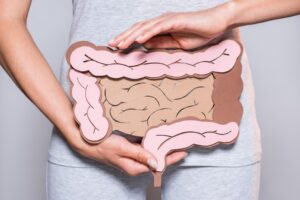In today’s fast-paced world, the importance of physical exercise extends beyond maintaining a fit body. A growing body of research highlights the profound impact of exercise on brain function and cognitive health.
While the physical benefits of exercise, such as weight management and cardiovascular health, are well known, the cognitive benefits are equally compelling. From improving memory to reducing the risk of neurodegenerative diseases, exercise plays a crucial role in maintaining a sharp and healthy mind.
This article discusses the benefits of regular exercise in terms of brain functions and provides information on how physical activity helps improve cognitive health.
Benefits of Exercise for Cognitive Health
Exercise Improves Brain Function
The relationship between exercise and cognitive health is deeply rooted in biology. Research suggests that physical activity increases blood flow to the brain, delivering oxygen and essential nutrients that support neuronal function. This enhanced circulation promotes neurogenesis – the growth of new brain cells – particularly in the hippocampus, a region critical for learning and memory.
Additionally, exercise stimulates the release of brain-derived neurotrophic factor (BDNF), a protein that encourages the survival and growth of neurons.
BDNF is often referred to as “fertilizer for the brain” due to its role in enhancing synaptic plasticity, which allows neurons to communicate more effectively. Higher levels of BDNF associated with regular exercise have been linked to improved cognitive function, reduced symptoms of depression, and a lower risk of neurodegenerative disorders like Alzheimer’s disease.
Memory Enhancement and Learning Abilities
Exercise significantly improves memory and learning by enhancing synaptic connections.
Studies have shown that people who engage in regular physical activity exhibit greater hippocampal volume, which correlates with improved memory retention and recall abilities. Aerobic exercises, such as running and cycling, have been particularly effective in enhancing memory, as they promote better blood circulation and encourage neurogenesis.
Beyond memory, exercise improves overall cognitive flexibility – the ability to switch between tasks and think creatively. This is especially important in a world where multitasking and rapid decision-making are required.
Regular exercise also strengthens the prefrontal cortex, which governs executive functions such as problem-solving, focus, and impulse control.
Stress Reduction and Mood Regulation
Stress and anxiety can severely impact cognitive function, leading to poor concentration, memory lapses, and mental fatigue.
Exercise acts as a natural stress reliever by reducing levels of cortisol, the body’s primary stress hormone. Physical activity also triggers the release of endorphins – chemicals in the brain that promote a sense of well-being and reduce pain perception.
Moreover, exercise has been found to regulate neurotransmitters such as dopamine and serotonin, both of which play vital roles in mood stabilization.
This is why people who engage in regular physical activity often experience lower rates of depression and anxiety, making exercise a powerful tool for mental health. Even moderate activities like walking or yoga can significantly improve emotional resilience and cognitive clarity.
Exercise and Aging: A Defense Against Cognitive Decline
As people age, cognitive decline becomes a major concern, with conditions like dementia and Alzheimer’s disease affecting millions worldwide.
Exercise has emerged as one of the most effective strategies for slowing cognitive decline and preserving brain function in older adults. Research suggests that regular physical activity enhances neuroplasticity – the brain’s ability to reorganize itself by forming new neural connections. This adaptability is crucial in maintaining cognitive abilities as we age.
Studies have also shown that older adults who engage in consistent physical activity demonstrate slower rates of cognitive decline and have a lower risk of developing neurodegenerative diseases.
Furthermore, exercise reduces inflammation and oxidative stress, both of which contribute to brain aging. By improving cardiovascular health, exercise ensures that the brain receives adequate oxygen and nutrients, preventing damage associated with age-related cognitive disorders.
Exercise Improves Sleep Quality
A well-functioning brain requires sufficient rest, and exercise plays a crucial role in improving sleep quality.
Physical activity helps regulate the body’s circadian rhythm, leading to deeper, more restorative sleep cycles and better sleep quality. Quality sleep, in turn, improves cognitive health, as it allows the brain to consolidate memories, process emotions, and eliminate toxins accumulated during waking hours.
The combination of exercise and proper sleep, thus, forms a powerful duo for maintaining sharp cognitive abilities.
Exercise as a Preventative Measure for Mental Disorders
Beyond enhancing cognitive performance, exercise serves as a preventative measure against various mental health disorders.
Regular physical activity lowers the risk of conditions such as depression, anxiety, and schizophrenia by promoting healthy brain chemistry and reducing inflammation. Also, physically active individuals have a lower likelihood of developing severe mental illnesses compared to those who lead sedentary lifestyles.
The protective effects of exercise stem from its ability to regulate neurotransmitters, improve resilience to stress, and enhance overall brain function.
The Impact of Different Types of Exercise on Cognitive Health
Not all exercises have the same impact on cognitive function, but a combination of aerobic, strength, and mind-body exercises provides comprehensive brain benefits.
Here’s a quick overview of how different forms of physical activity support cognitive health:
- Aerobic Exercise: Activities such as jogging, swimming, and cycling are particularly beneficial for brain health. Aerobic exercise increases heart rate, which, in turn, boosts blood flow and oxygenation to the brain, promoting neurogenesis and enhancing memory.
- Strength Training: While often associated with muscle growth, resistance exercises like weightlifting and bodyweight workouts also benefit the brain. Strength training has been linked to improved executive function, better problem-solving skills, and increased mental focus.
- Mind-Body Exercises: Activities such as yoga and tai chi combine physical movement with mindfulness, reducing stress and enhancing cognitive clarity. These exercises improve balance, coordination, and relaxation, which contribute to overall mental well-being.
The Importance of Consistency in Exercise for Cognitive Benefits
While occasional physical activity provides short-term mental benefits, the key to long-term cognitive health lies in consistency.
Engaging in at least 150 minutes of moderate-intensity exercise per week has been shown to yield significant improvements in cognitive function.
It is also important to incorporate variety into exercise routines. Combining aerobic workouts, resistance training, and mind-body exercises ensures that different brain regions are activated, promoting holistic cognitive enhancement.
Conclusion
The connection between exercise and brain function is undeniable. From boosting memory and learning abilities to reducing stress and preventing cognitive decline, physical activity serves as one of the most effective tools for maintaining mental sharpness.
Science continues to uncover new ways in which exercise supports brain health, reinforcing the importance of an active lifestyle.
Regardless of age or fitness level, incorporating regular physical activity into daily routines can lead to profound cognitive benefits. Whether through brisk walks, resistance training, or mindful movement, every step taken toward an active lifestyle is a step toward a healthier, more resilient brain.
References:
- https://www.sciencedirect.com/science/article/abs/pii/S0006899323001269
- https://www.sciencedirect.com/science/article/abs/pii/S1568163718300448
- https://www.pnas.org/doi/full/10.1073/pnas.1015950108
- https://www.mdpi.com/2076-328X/9/8/83
- https://www.frontiersin.org/journals/human-neuroscience/articles/10.3389/fnhum.2013.00203/full





